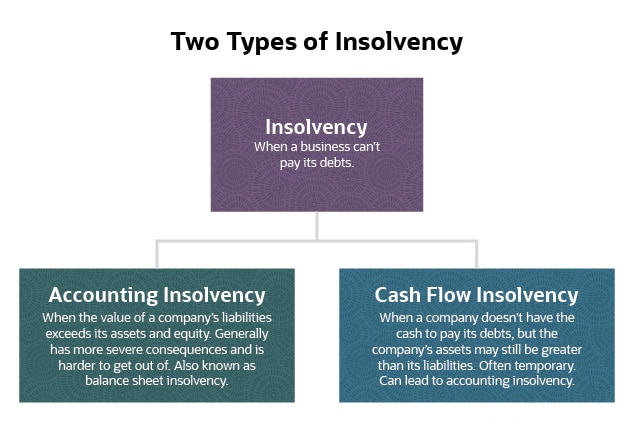More About Insolvency Practitioner
More About Insolvency Practitioner
Blog Article
Insolvency Practitioner Things To Know Before You Get This
Table of ContentsThe Facts About Insolvency Practitioner RevealedThe 25-Second Trick For Insolvency PractitionerThe Definitive Guide to Insolvency PractitionerSee This Report on Insolvency PractitionerThe 7-Second Trick For Insolvency PractitionerMore About Insolvency PractitionerThe 7-Second Trick For Insolvency Practitioner
Insurance is kept track of and regulated by state insurance coverage divisions, and one of their primary objectives is securing insurance holders from the threat of a company in financial distress. When a company gets in a period of monetary problem and is not able to satisfy its commitments, the insurance policy commissioner in the firm's home state initiates a processdictated by the regulations of the statewhereby initiatives are made to assist the business restore its monetary ground.If it is established that the business can not be refurbished, the business is stated bankrupt, and the commissioner will ask the state court to order the liquidation of the company. [Back] The insurance commissioner, either appointed by the governor or chosen, heads the state insurance policy division and displays and controls insurance coverage activity within the state.
[Back] By acquiring control of a business, the commissioner (or the insurance coverage department) is, by regulation, the rehabilitator or liquidator of the business. In this capability, the commissioner or department takes control of the business's procedures. As opposed to do so straight, the commissioner may keep an unique replacement receiver to oversee the firm's tasks.
The Main Principles Of Insolvency Practitioner
The receiver manages an accountancy of the firm's properties and responsibilities and administers the estate of the firm. In doing so, the receiver seeks to optimize the business's properties, transfer them to cash, and after that distribute that cash money to creditors having legitimate cases versus the insurance provider in accordance with settlement concerns specified by state law (in all states, insurance holders are priority plaintiffs whose claims are paid before those of general creditors).
All insurance provider (with restricted exceptions) licensed to sell life or medical insurance or annuities in a state have to be members of that state's guaranty association. The guaranty association complies with the commissioner and the receiver in pre-liquidation preparation. Once the liquidation is purchased, the warranty organization supplies coverage to the firm's policyholders who are state citizens (approximately the degrees specified by state lawssee below; any kind of advantage amounts above the guaranty asociation benefit degrees end up being insurance claims versus the business's staying properties).
The above protection levels use independently for each and every financially troubled insurance provider. [Back] When an insurance provider falls short and there is a shortfall of funds required to fulfill the obligations to insurance policy holders, state guaranty associations are triggered. Warranty organizations have 2 major resources of funding when supplying coverage to insurance holders. Warranty organizations have subrogation legal rights to a proportional share of the assets staying in the stopped working insurer.
The Single Strategy To Use For Insolvency Practitioner

NOLHGA establishes a job pressure of representative warranty organizations to collaborate with the insurance coverage commissioner to create a strategy to shield policyholders. For additional information on visit this page NOLHGA's role in the procedure, see "What Is NOLHGA?" and "The Safety And Security Web at the office." [Back]
You are below: Bankruptcy is when a company or individual can not pay financial debts when they schedule. There are a number of options readily available to a financially troubled firm or individual: ASIC regulates business, it does not manage individual insolvency procedures. For more details about personal bankruptcy and personal insolvency arrangements, see the Australian Financial Safety Authority website.
The Insolvency Practitioner Statements
Predictive security by aiding you pick the right consumers and the best markets to avoid poor debt to begin with, many thanks to severe monetary analysis - Insolvency Practitioner. Extensive market knowledge, giving you with 360-degree visibility on organization fields and impending difficulties. It would certainly be a simplification to assume a trade debt insurance starts and finishes with costs and pay-outs
This can happen for a variety of dig this reasons, consisting of bad economic monitoring, unexpected prices, or a change in the marketplace. If a firm is financially troubled, it may be compelled to fold or liquidate possessions to pay creditors. This can have a major influence on business, workers, and shareholders.
It can bring about work losses, possession sales, and even insolvency. It is very important to comprehend exactly how company bankruptcy works and exactly how it can influence your company. Why does a business participate in bankruptcy? There are a variety of reasons why a company may get in into insolvency. One of the most typical factor is that the company is unable to pay its financial obligations as they drop due.
Insolvency Practitioner - Questions
Various other factors for bankruptcy consist of fraud, mismanagement, and unforeseen expenses. Bankruptcy can also lead to job losses and the closure of organizations.
The business might be required to offer assets, lay off personnel or also shut down. Lenders may be left out of pocket and the company's investors might see their investment vanish.
This can occur for a variety of factors, consisting of bad economic administration, unforeseen costs, or an adjustment useful content in the marketplace. If a business is financially troubled, it might be forced to shut down or liquidate assets to pay creditors. This can have a significant effect on business, employees, and shareholders.
The Buzz on Insolvency Practitioner
Why does a business get in right into insolvency? There are a number of reasons why a business might enter into insolvency.
Other reasons for insolvency consist of fraudulence, mismanagement, and unanticipated prices. Insolvency can also lead to job losses and the closure of companies.
The Basic Principles Of Insolvency Practitioner

Report this page